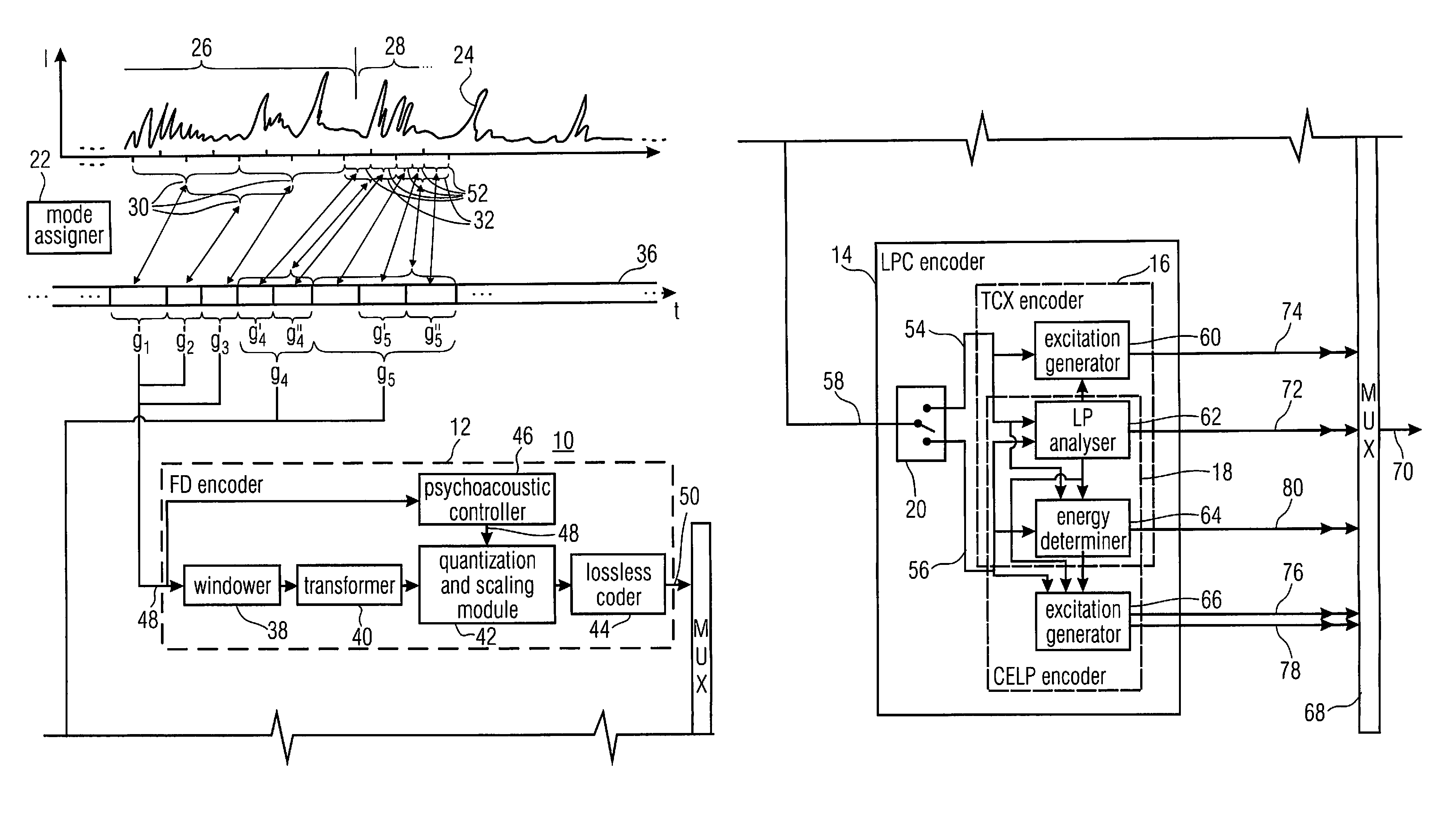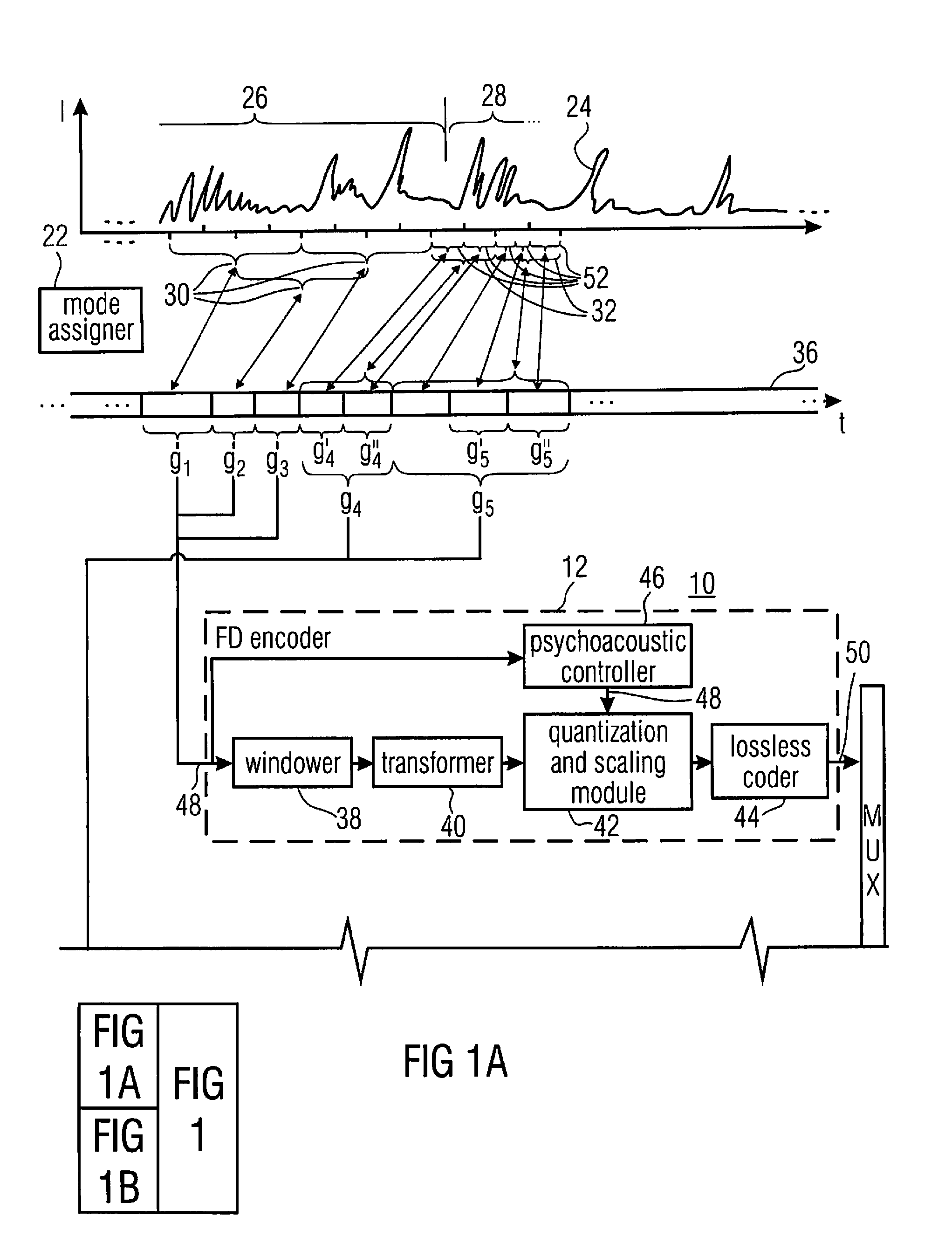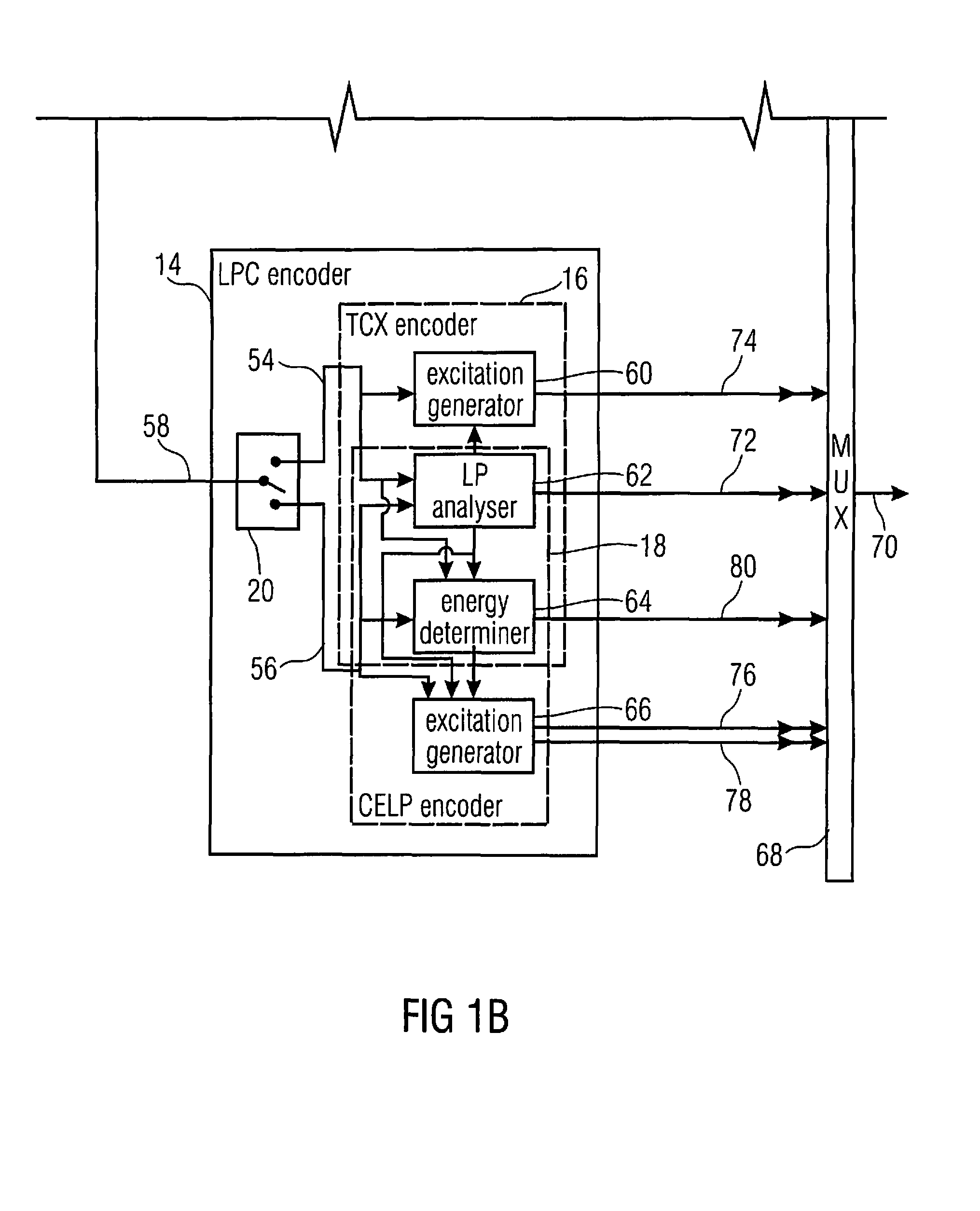Multi-mode audio codec and CELP coding adapted therefore
a multi-mode audio codec and audio codec technology, applied in the field of multi-mode audio codec and celp coding adapted therefore, can solve the problems of lossless undoing, reducing the quality of gain-adjusted bitstreams, and affecting the quality of speech analysis,
- Summary
- Abstract
- Description
- Claims
- Application Information
AI Technical Summary
Benefits of technology
Problems solved by technology
Method used
Image
Examples
Embodiment Construction
[0038]FIG. 1 shows an embodiment of a multi-mode audio encoder according to an embodiment of the present application. The multi-mode audio encoder of FIG. 1 is suitable for encoding audio signals of a mixed type such as of a mixture of speech and music, or the like. In order to obtain an optimum rate / distortion compromise, the multi-mode audio encoder is configured to switch between several coding modes in order to adapt the coding properties to the current needs of the audio content to be encoded. In particular, in accordance with the embodiment of FIG. 1, the multi-mode audio encoder generally uses three different coding modes, namely FD (frequency-domain) coding, and LP (linear prediction) coding, which in turn, is divided up into TCX (transform coded excitation) and CELP (codebook excitation linear prediction) coding. In FD coding mode, the audio content to be encoded is windowed, spectrally decomposed, and the spectral decomposition is quantized and scaled according to psychoac...
PUM
 Login to View More
Login to View More Abstract
Description
Claims
Application Information
 Login to View More
Login to View More - R&D
- Intellectual Property
- Life Sciences
- Materials
- Tech Scout
- Unparalleled Data Quality
- Higher Quality Content
- 60% Fewer Hallucinations
Browse by: Latest US Patents, China's latest patents, Technical Efficacy Thesaurus, Application Domain, Technology Topic, Popular Technical Reports.
© 2025 PatSnap. All rights reserved.Legal|Privacy policy|Modern Slavery Act Transparency Statement|Sitemap|About US| Contact US: help@patsnap.com



